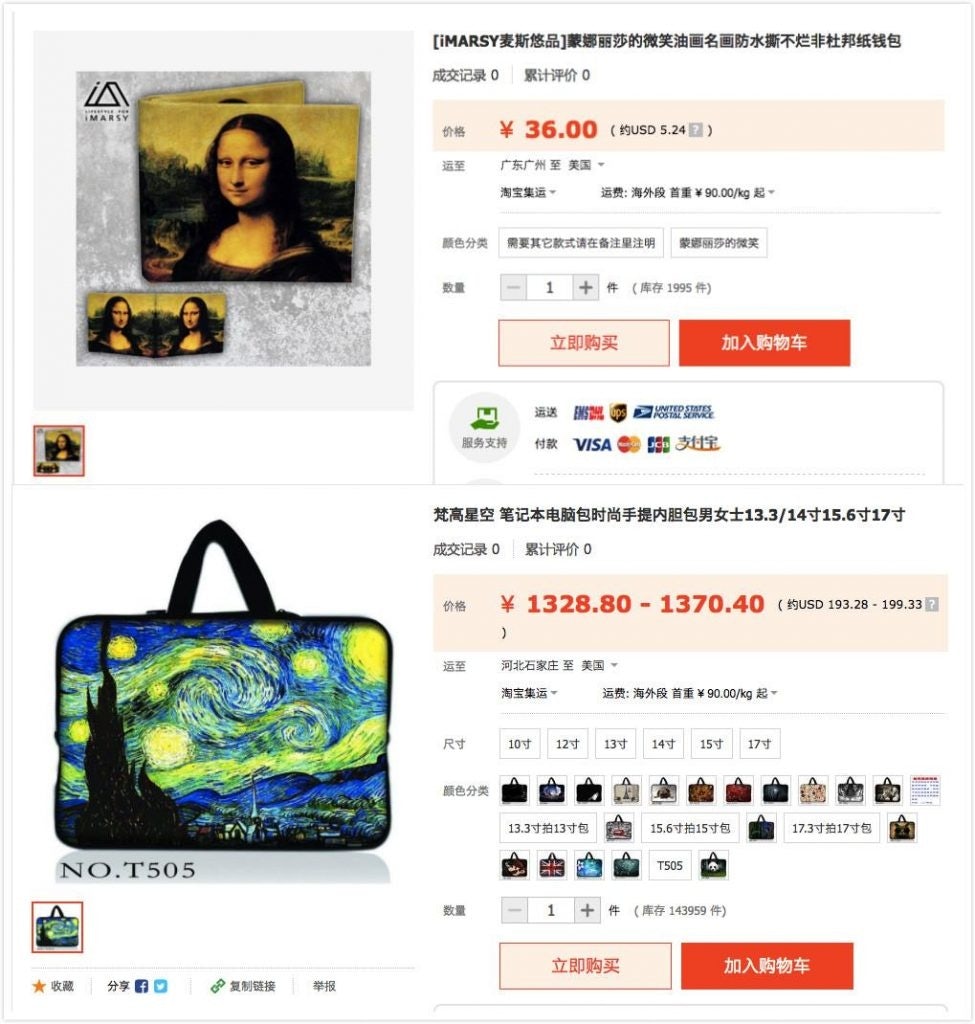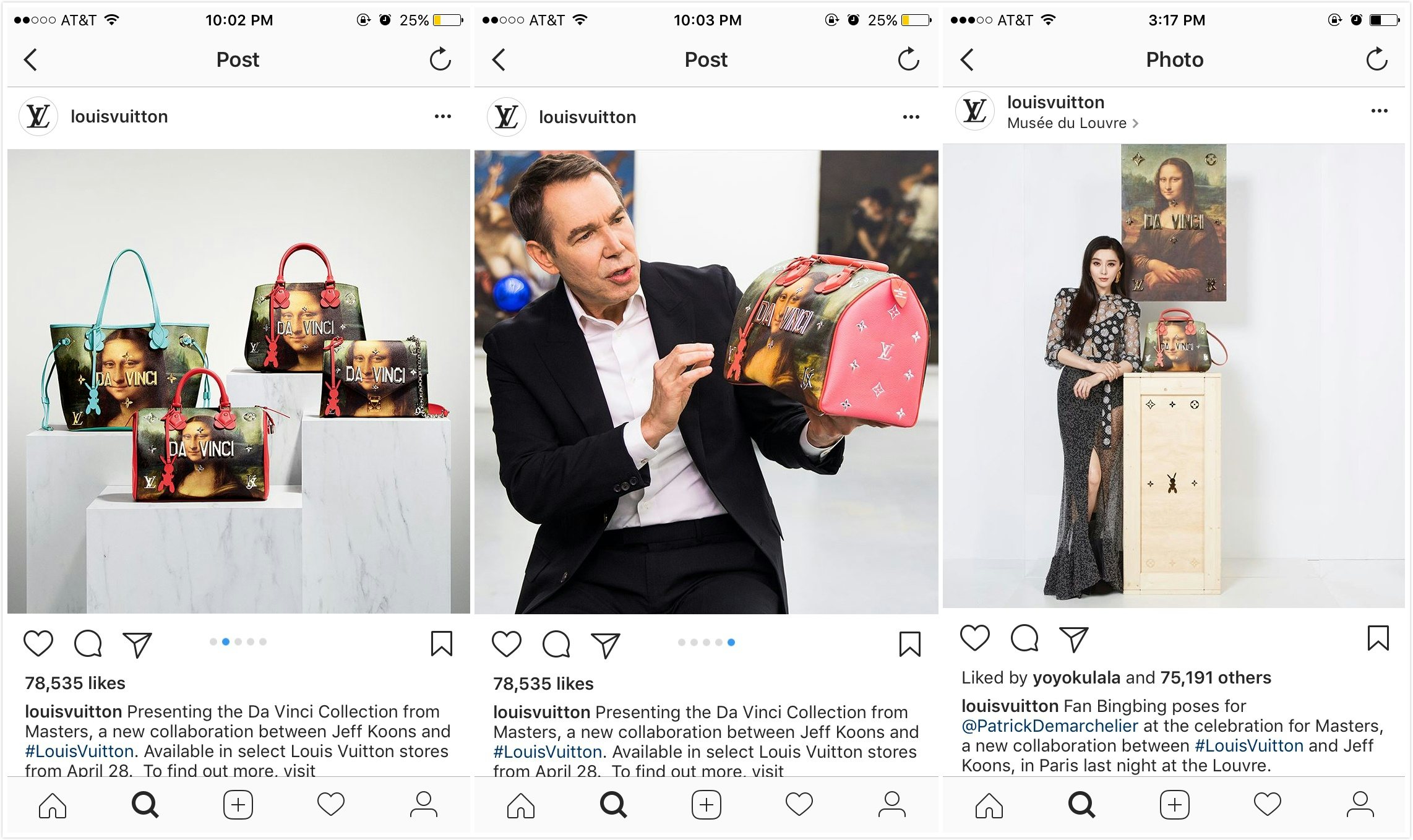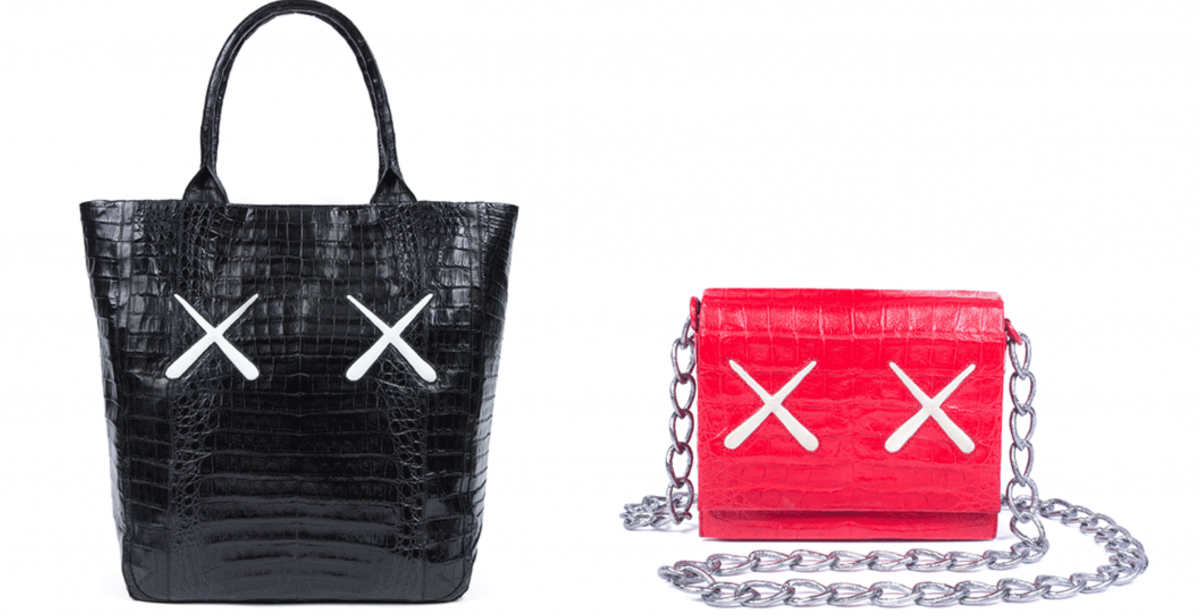China has been an exciting testing ground as of late for collaborations between the art world and luxury, with pop and contemporary art becoming increasingly influential among China's emerging middle class youth. However, the latest partnership in this category, this time between French luxury brand Louis Vuitton and New York-based pop artist Jeff Koons, has attracted mixed reviews on Chinese social media.
Last week, the French luxury powerhouse released its new "Masters" collection of handbags and accessories, which are devoted to celebrating classical works of fine art and presenting them in a modern way to inspire new interpretations from the general public. Koons, who is a renowned collector of old masters paintings and sculptures, created the bags as an extension of his 2015 “Gazing Ball” series that featured reproductions of paintings by five iconic artists, including “Mona Lisa” by Leonardo da Vinci, “Mars, Venus and Cupid” by Titan, “The Tiger Hunt” by Peter Paul Rubens, “Young Girl Playing With Her Dog” by Jean-Honoré Fragonard, and “Wheatfield With Crows” by Vincent Van Gogh.
The Masters collection incorporates Louis Vuitton’s classic handbag models “Speedy”, “Neverfull”, and Keepall”, with prices varying from US2,800 to US4,000. Chinese consumers can purchase the collection directly on the brand’s Chinese official website.
As it turns out, Louis Vuitton has made China an important market to promote and sell the Masters collection. Aside from the publicity on the Chinese site, the brand’s WeChat and Weibo accounts both posted promotional materials immediately upon the global release of the capsule. In addition, during the launch event of the series in Paris, Louis Vuitton not only hosted a number of A-list Hollywood celebrities, including Jennifer Aniston, Michelle Williams and Cate Blanchett, but also invited Fan Bingbing, a high-profile Chinese actress, with the hope of leveraging her online influence to warm up the Chinese market to the capsule.
However, the efforts may have not paid off as well as expected. On Louis Vuitton’s official Weibo account where the brand introduced the collection (it was later reposted by Fan Bingbing and several other online fashion bloggers), Chinese social media users have actively expressed their opinions, with approximately half of them criticizing the design.
“Look at the color scheme, it is just like those fake luxury handbags sold on the street that are worth less than 100 RMB,” one Weibo user wrote. While counterfeit products are already a major issue for luxury brands, including Louis Vuitton, on Tmall in China, Koons’ creativity also happens to coincide with the imagination of many sellers on Taobao, Alibaba's other e-commerce platform. On the platform, there are countless vendors that print famous paintings on their goods and sell them at a cheap price. In the photo below, the Mona Lisa wallet is selling for just 36 RMB, or US5.23.

But there are also consumers on social media who are defending the collection. For example, one user replied to the above comment, saying “Louis Vuitton uses the best leather materials to make the handbags, so they will not look and feel the same as the ones on the street.”
Another typical criticism from the Chinese online community questions the philosophy of Koons’ design. One Weibo user wrote, “Why do they think they can double the price through printing classical artwork on their signature bags?” In addition, critics think Koons’ design doesn't outdo that of the classic handbags by the brand. Many users even cited Gucci’s creative designer Alessandro Michele as an example that Koons should learn from when it comes to design. “Look at Gucci and how sophisticated its design is,” another Weibo user said.
But while there are plenty of criticisms, there are also many supporters of the art and luxury connection who say they feel the handbags are a great way to introduce more works of art to ordinary consumers who aren't as familiar with the art world. Some commentators with previous knowledge of the background of Jeff Koons praised his attempt to recreate paintings by old masters in his own way. “What a surprise and a wild imagination!” a Weibo user wrote.
China now leads the world in luxury goods consumption, and Chinese consumers have slowly become a driving force in the global art market in recent years, so the country is set to be a promising market to nurture a healthy relationship between art and luxury. The reactions from the online community, though, suggest brands may need to further educate their audience on the artists they work with to better convey their product's story. An understanding of Koons beyond his iconic Balloon Dog (which has been recognizable in China to the extent that it has also been a target of knockoffs on Taobao), could no doubt help with consumers' perception of the Masters handbags.

